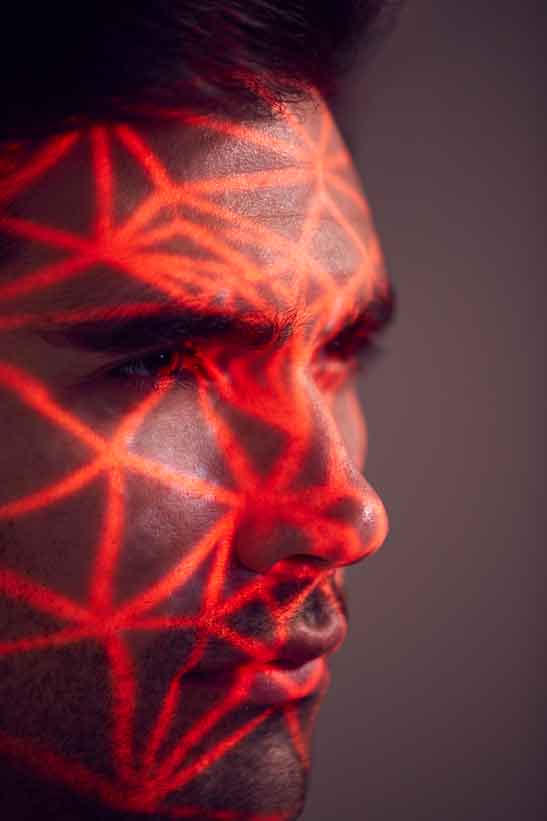AI Facial Recognition | Video Surveillance Facial Recognition
The main goal of CCTV security surveillance was only to take successive photos when motion was detected. Today, CCTV or video surveillance systems are not only about security. Modern CCTV technologies are vested with advanced analytics software and have an advanced option for face recognition software. So face recognition is a great complement to the traditional CCTV systems. Now face recognition systems can automate this task. Security Video Technology (SVT) can also use the system to investigate incidents. Imagine that a camera recorded an intrusion and the perpetrator’s face. That’s great, but it’s not useful until you know who the person actually is. Face recognition can make that happen, too. Give us a call to discuss your situation and design..

How AI Facial Recognition Is Changing the World
Just a few decades ago, the idea of a computer being able to identify a human’s face with pinpoint accuracy was little more than a pipe dream. However, recent advances in artificial intelligence (AI) have made this technology reality, and it is now being used in a wide range of applications.
One of the most promising areas where AI facial recognition is being deployed is in security and law enforcement. For example, airport security checkpoints are using the technology to scan passenger faces and verify their identities. In China, a massive AI facial recognition system is being used to identify and track people in real time.
There are also a number of commercial applications for AI facial recognition. For example, online retailers are using the technology to identify customers and provide them with a tailored shopping experience. Retailers are also using AI facial recognition to deter theft, as the technology can be used to identify shoplifters and track their movements around the store.
AI facial recognition is also being used for social media purposes. Facebook, for example, is using the technology to identify people in photos and videos. This is being done in order to help improve the accuracy of facial recognition algorithms and to make it easier for people to find photos and videos of themselves.
While there are many benefits to using AI facial recognition, there are also some potential concerns that need to be considered. One such concern is the potential for abuse. For example, if the technology is used to identify and track people’s movements, it could be used to track and spy on them. Another concern is the lack of regulation of the technology. There are no global standards governing the use of AI facial recognition, and this could lead to abuses as different countries or organizations race to deploy the technology.
Despite these concerns, AI facial recognition is quickly becoming a ubiquitous part of our society. Its benefits are too great to ignore, and it is likely that the technology will only become more ubiquitous in the years to come.
Video Surveillance Facial Recognition
There is no doubt that video surveillance is an important part of keeping our communities safe. But what if that technology could do more? What if it could help identify criminals and terrorists before they have a chance to do harm?
Thanks to advances in facial recognition technology, that is now a possibility. Video surveillance systems can be outfitted with software that can identify people by their facial features. This means that law enforcement can quickly and easily identify criminals and terrorists from video footage.
Facial recognition technology has been around for a while, but it has traditionally been quite inaccurate. However, recent advances in the technology have made it much more accurate. In fact, some studies have shown that facial recognition software can identify people with a 95% accuracy rate.
This technology is already being used by law enforcement in a number of countries, including the United States, the United Kingdom, and China. In the United States, the FBI has been using a facial recognition system called NGI since 2011. NGI can identify people from photos and videos taken from a variety of sources, including social media, driver’s licenses, and passport photos.
The use of facial recognition technology by law enforcement is not without its controversies. Many people are concerned about the privacy implications of this technology. They worry that the technology will be used to track innocent people and that the data collected by the technology will be used for nefarious purposes.
However, the benefits of facial recognition technology clearly outweigh the risks. This technology can help law enforcement identify criminals and terrorists before they have a chance to do harm. It can also help law enforcement solve crimes more quickly and easily.
Conclusion
As AI facial recognition technology continues to develop, it has the potential to become an increasingly valuable tool for law enforcement and security agencies. However, there are also concerns that the technology could be abused, with implications for privacy and civil liberties. Whilst it is still in its early stages, it is clear that AI facial recognition technology has the potential to change the way we live and work.
#securityvideotechnology #svtcctv #facialrecognition


